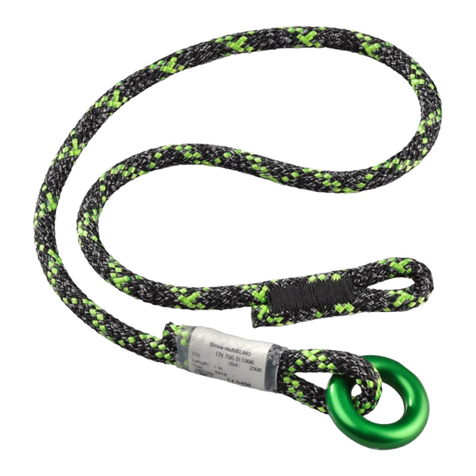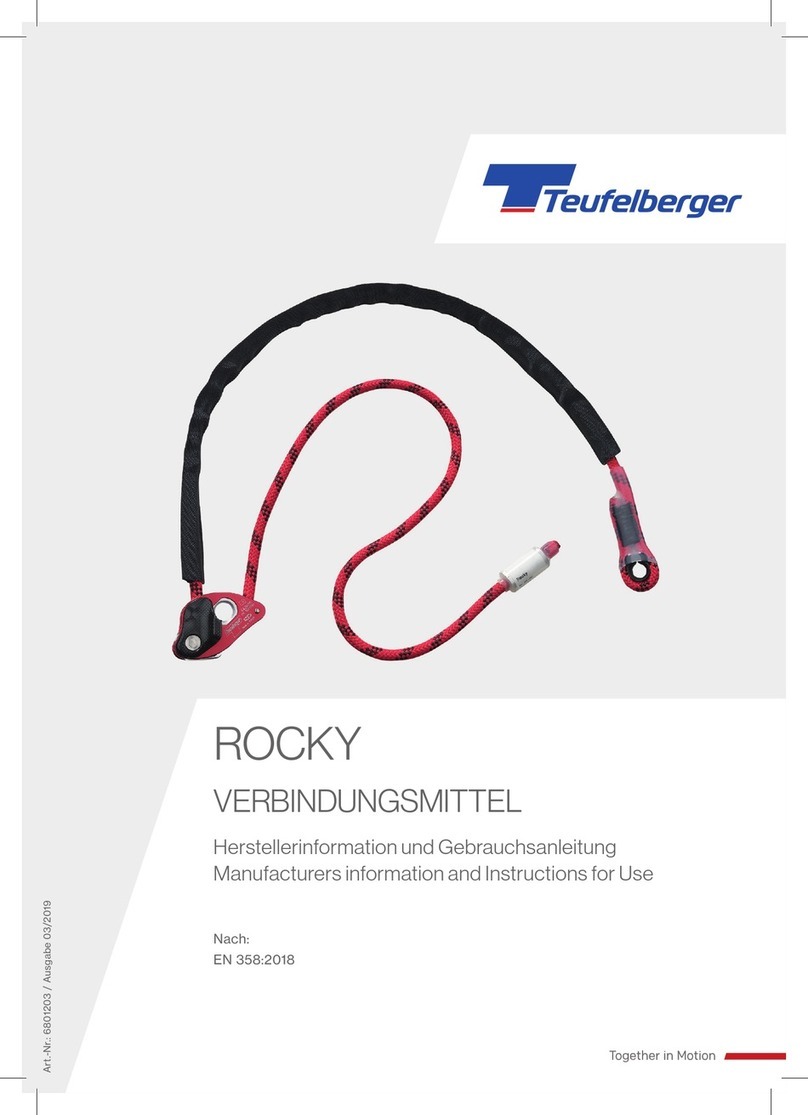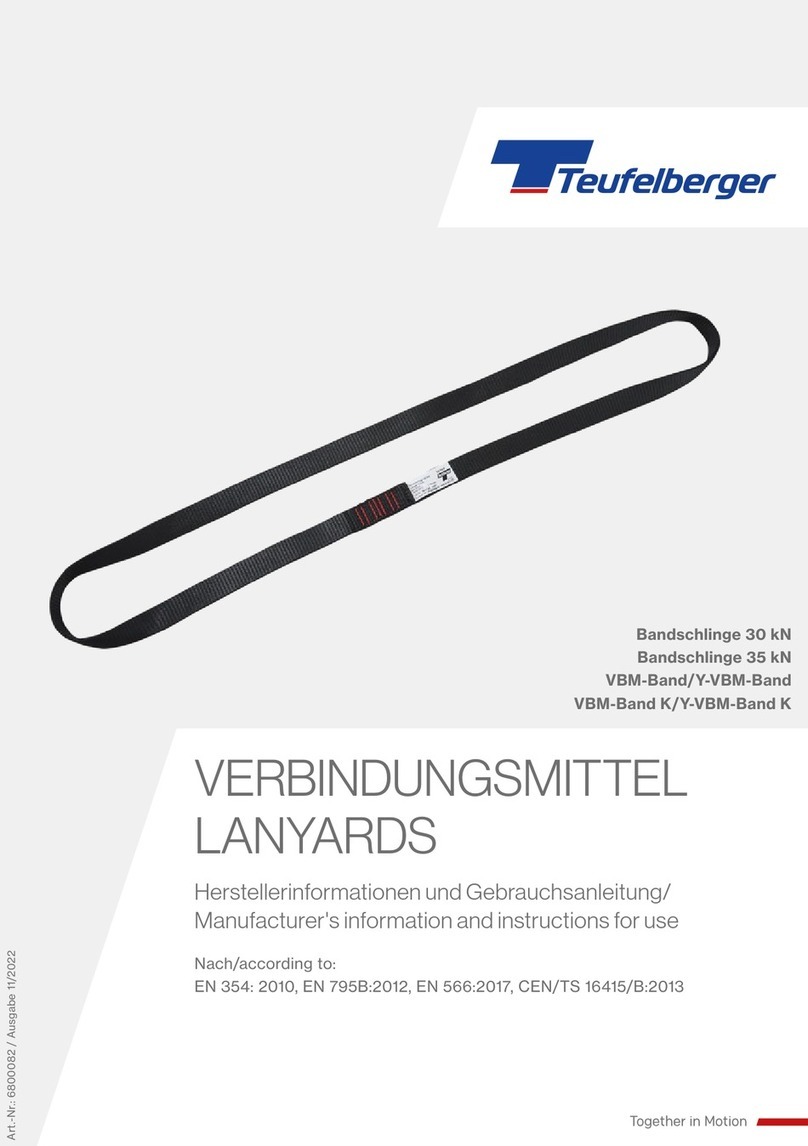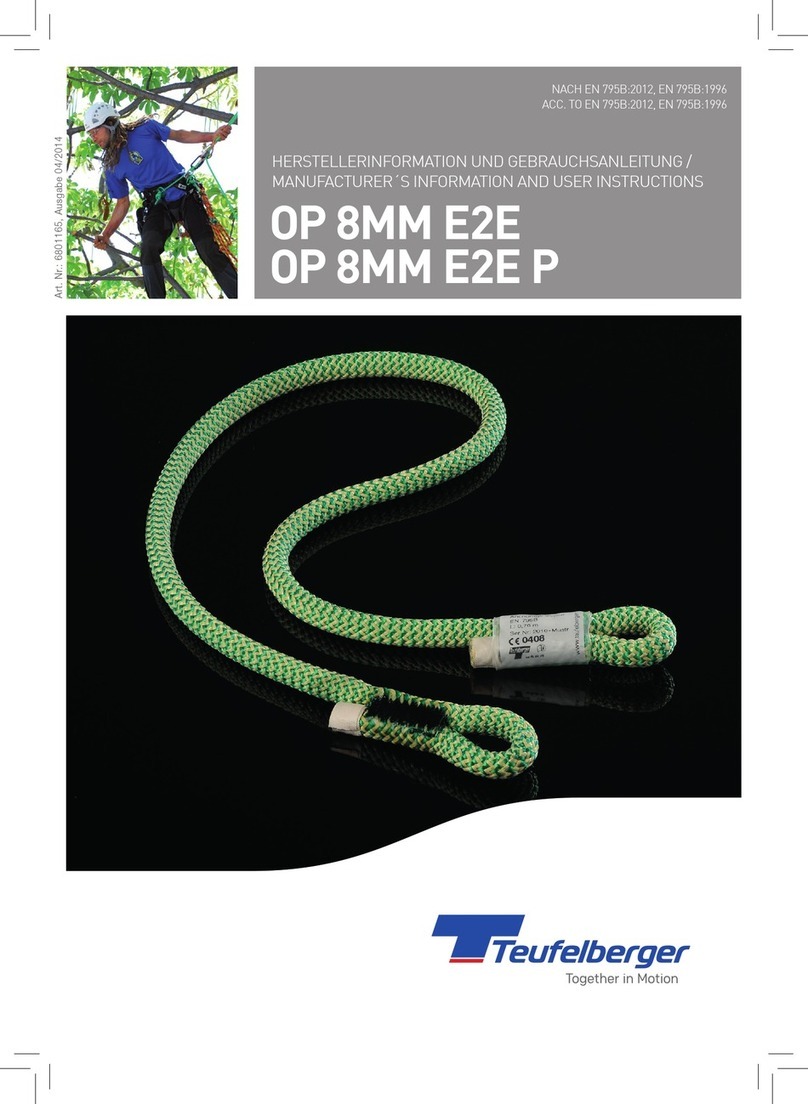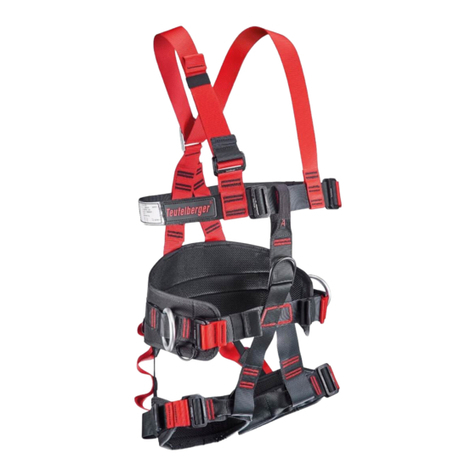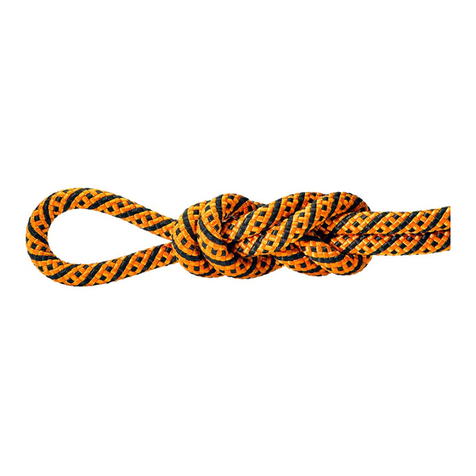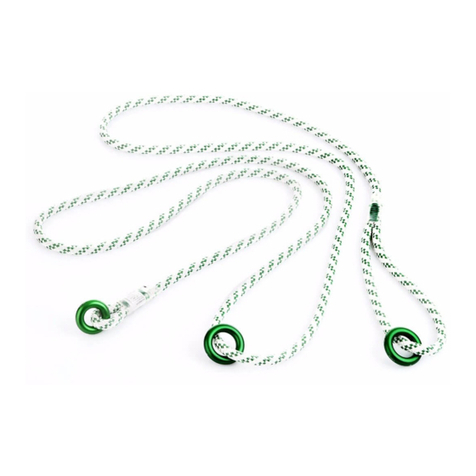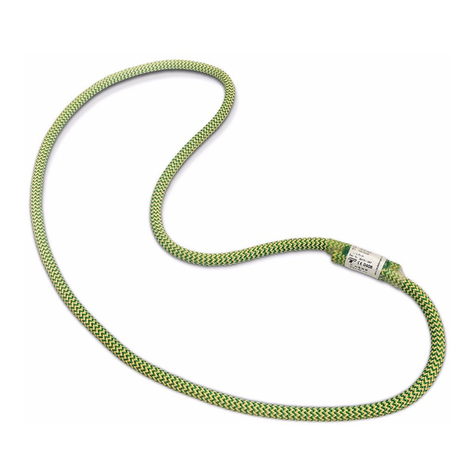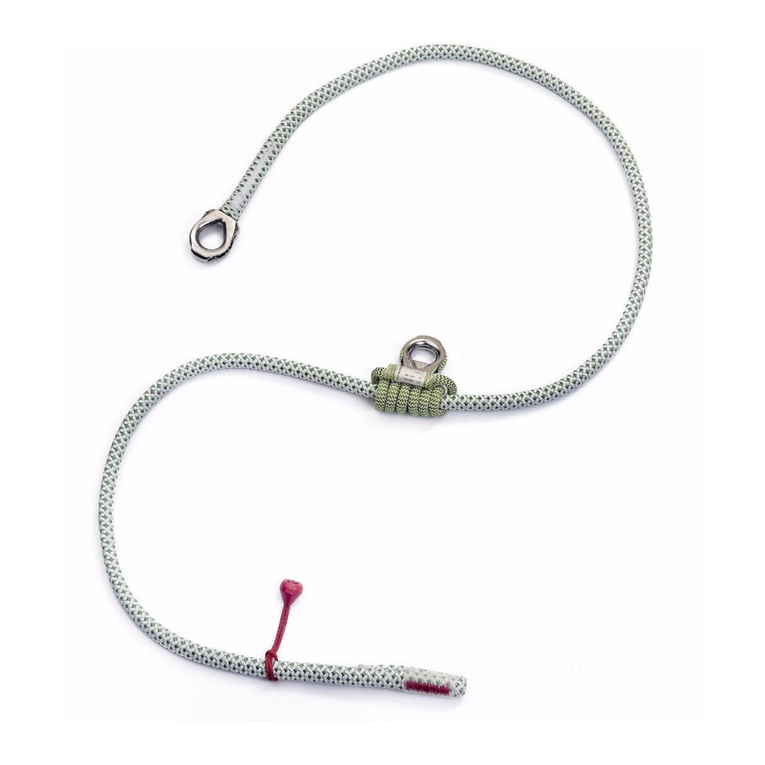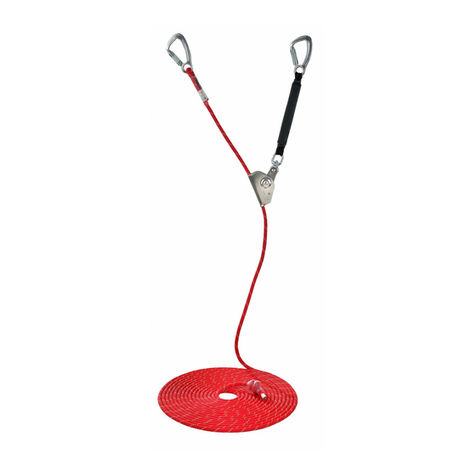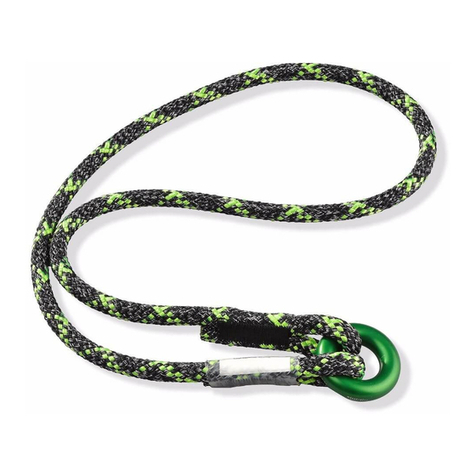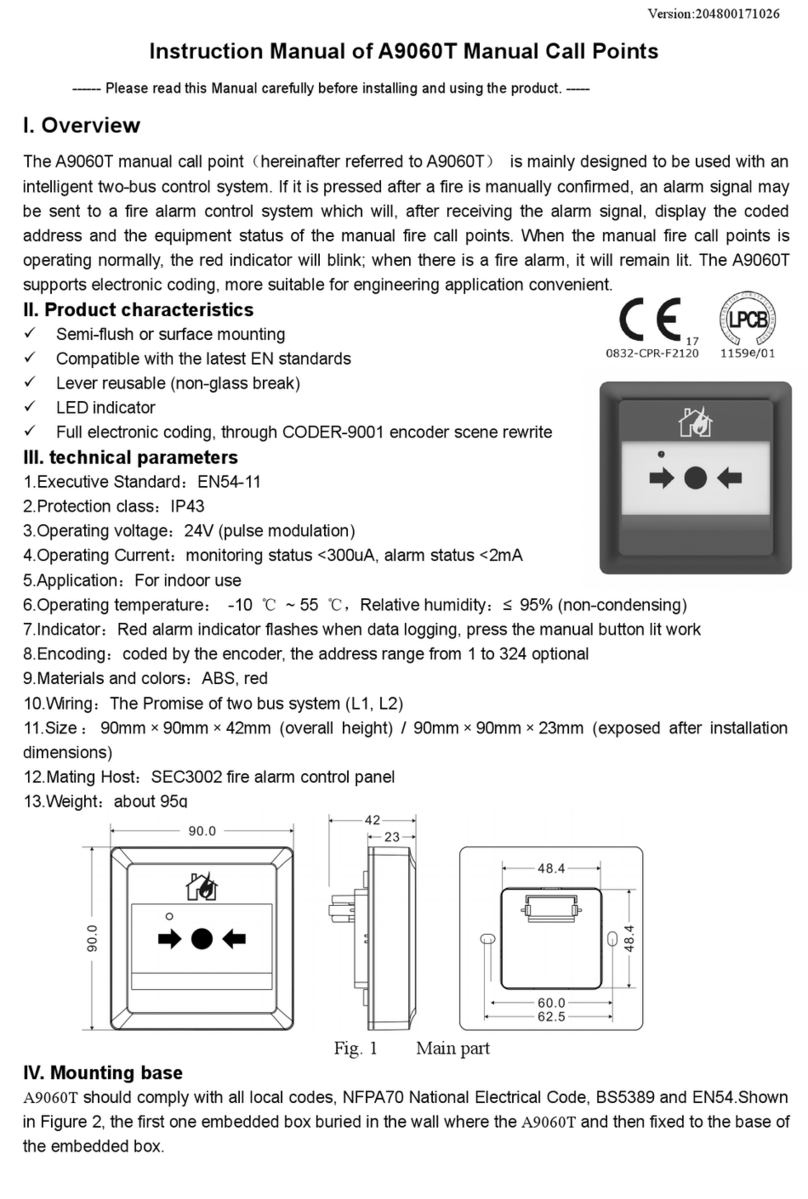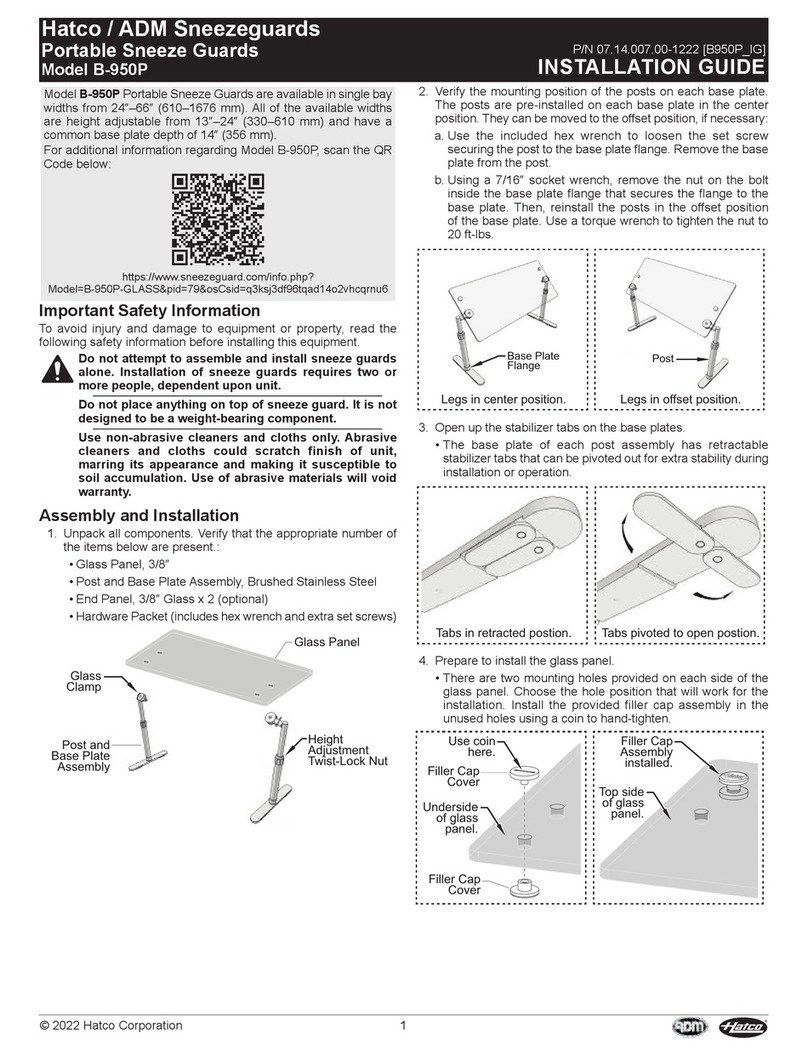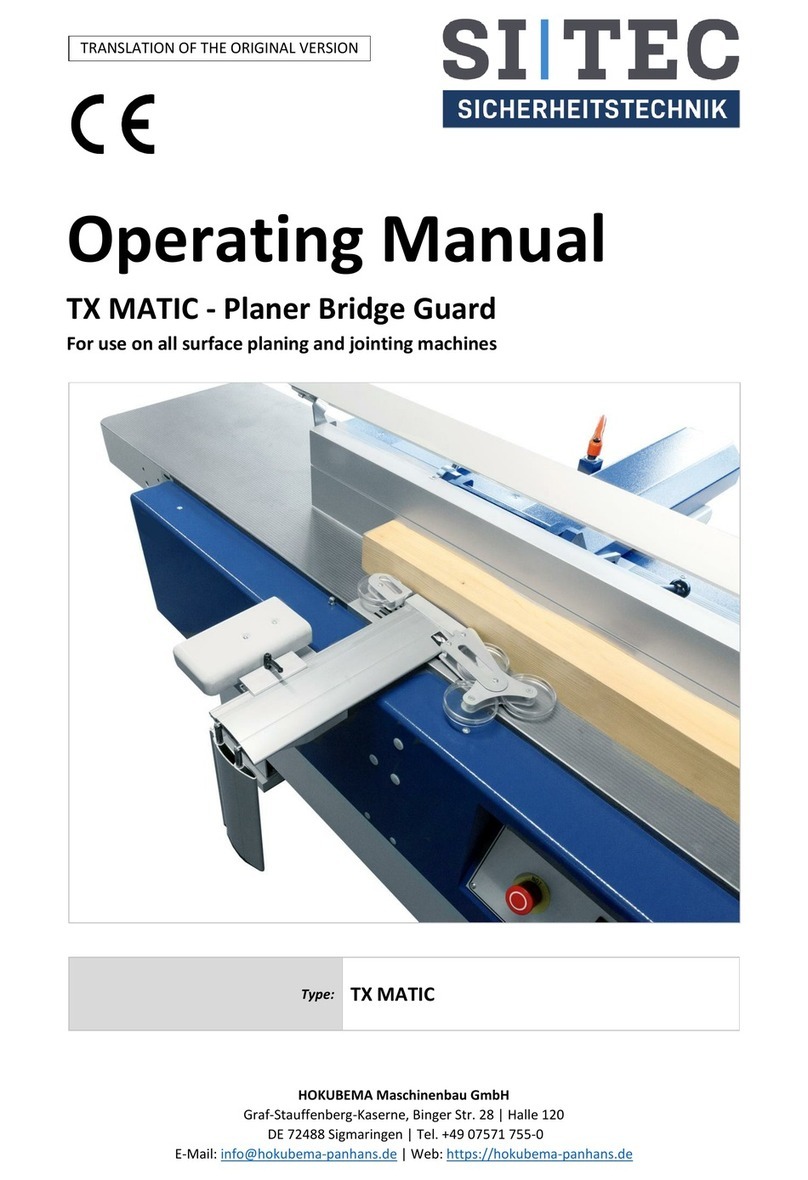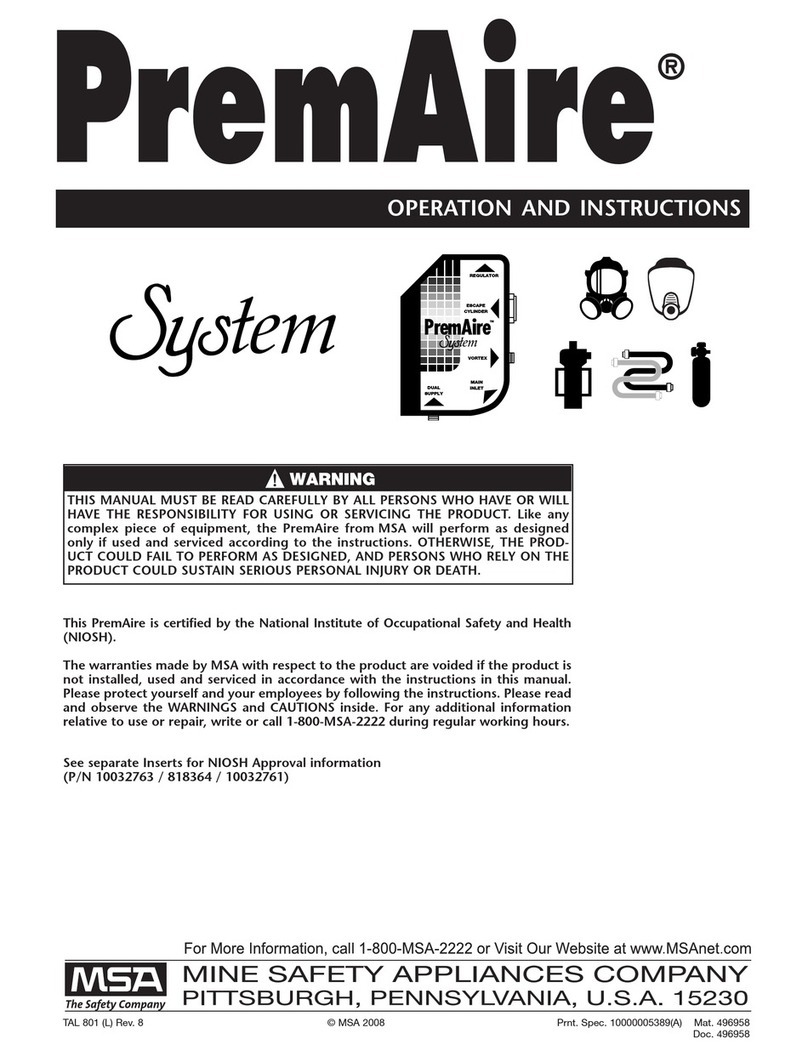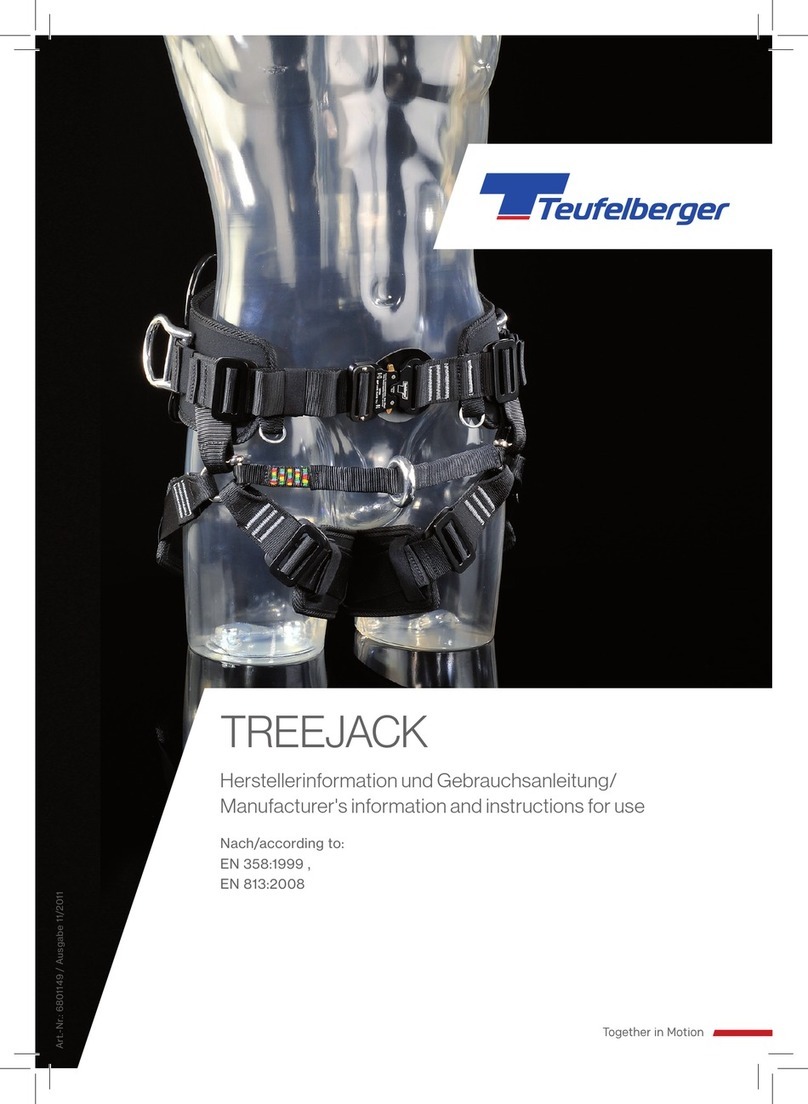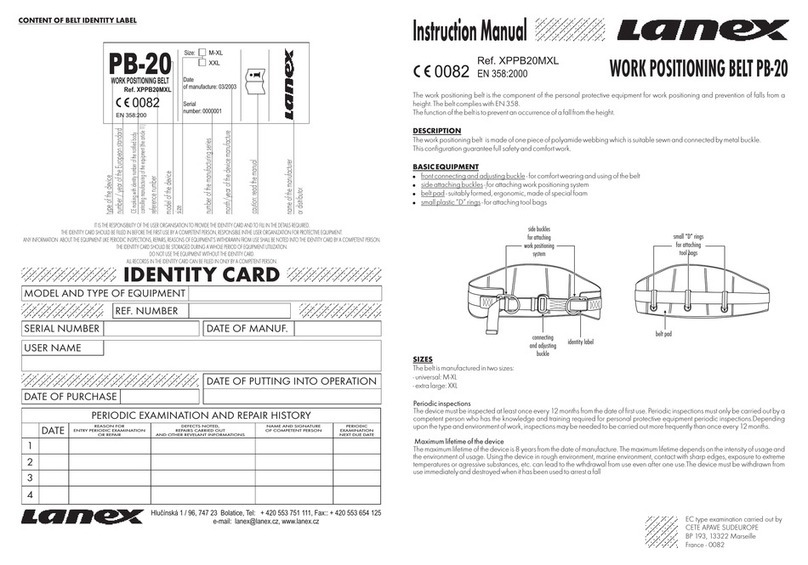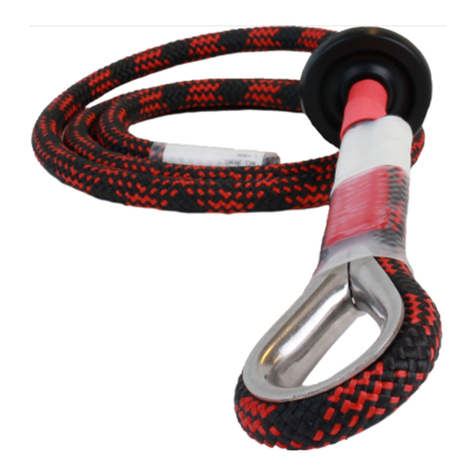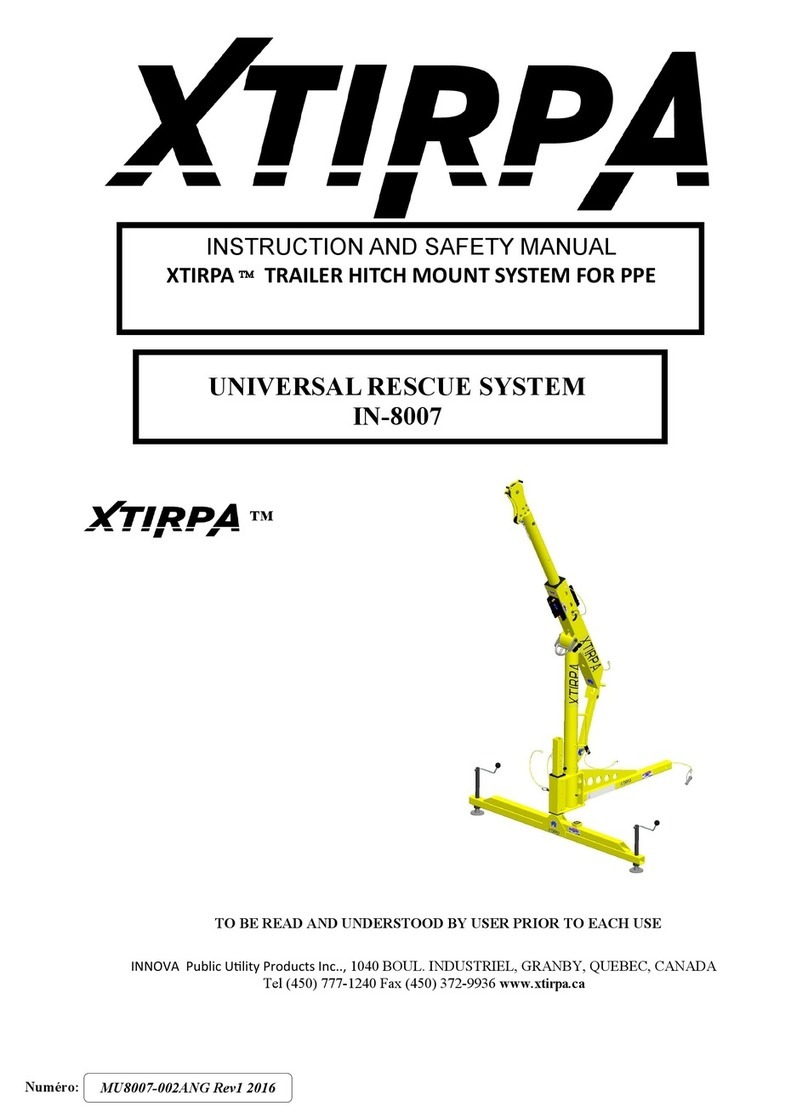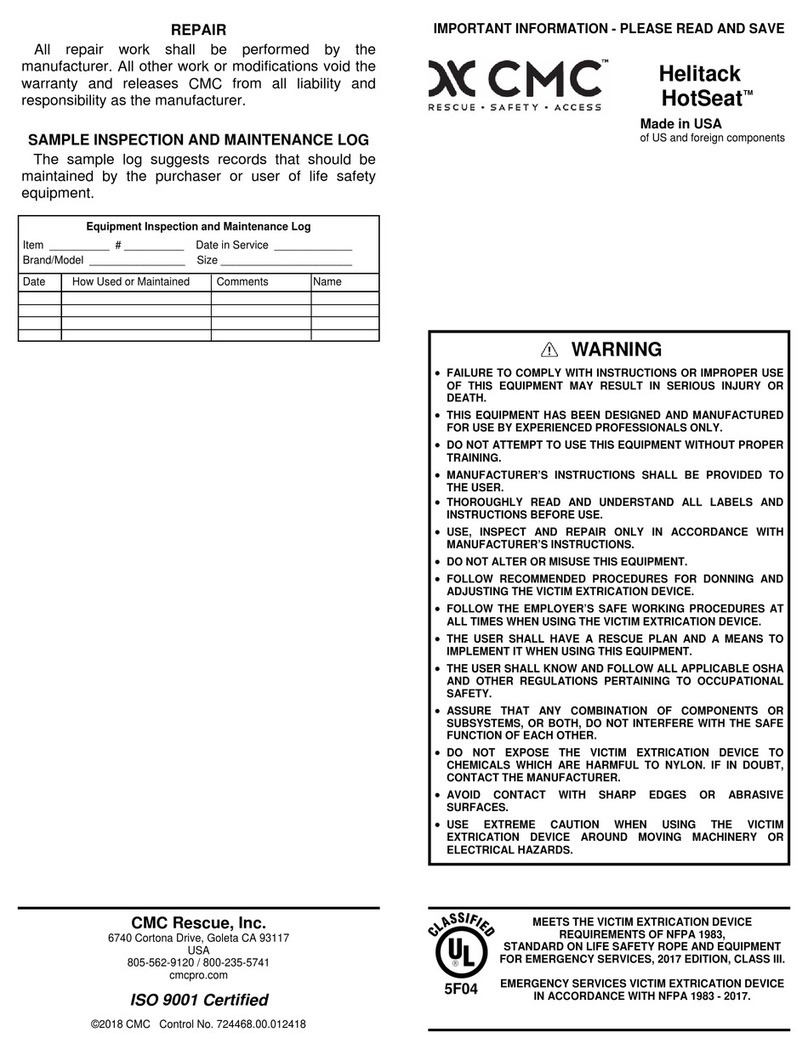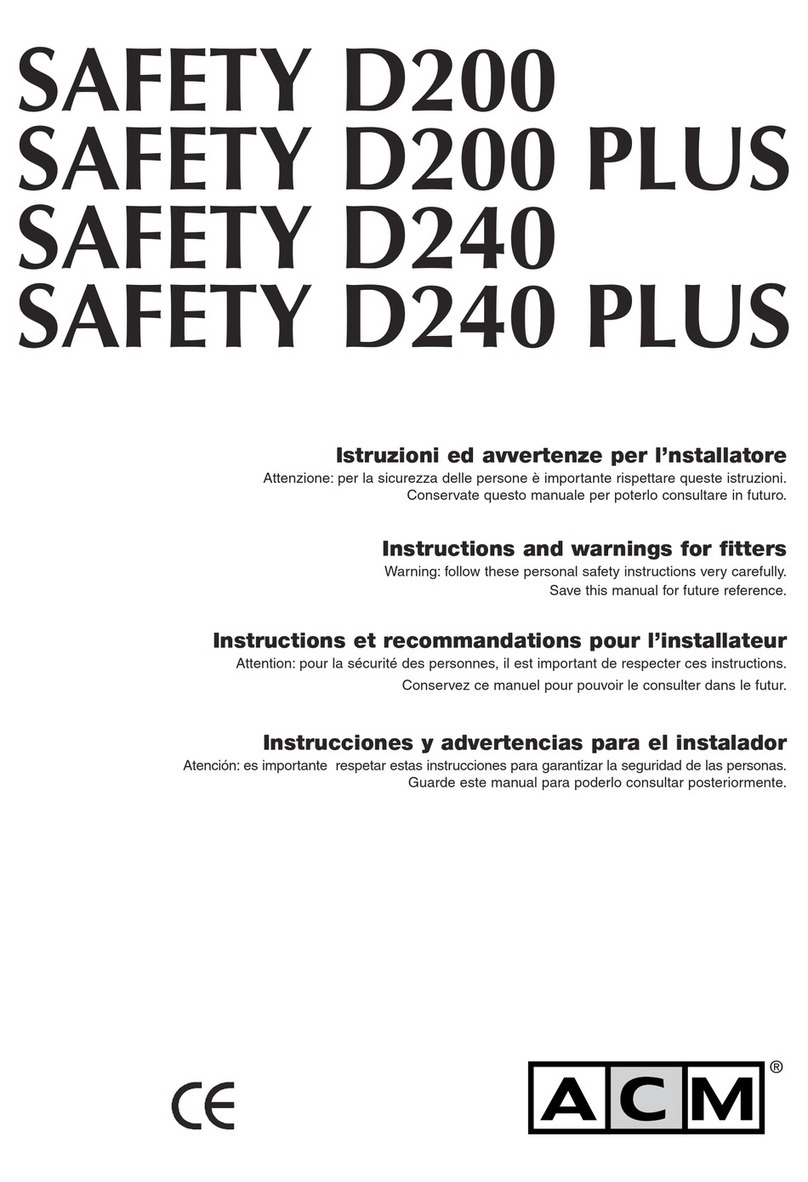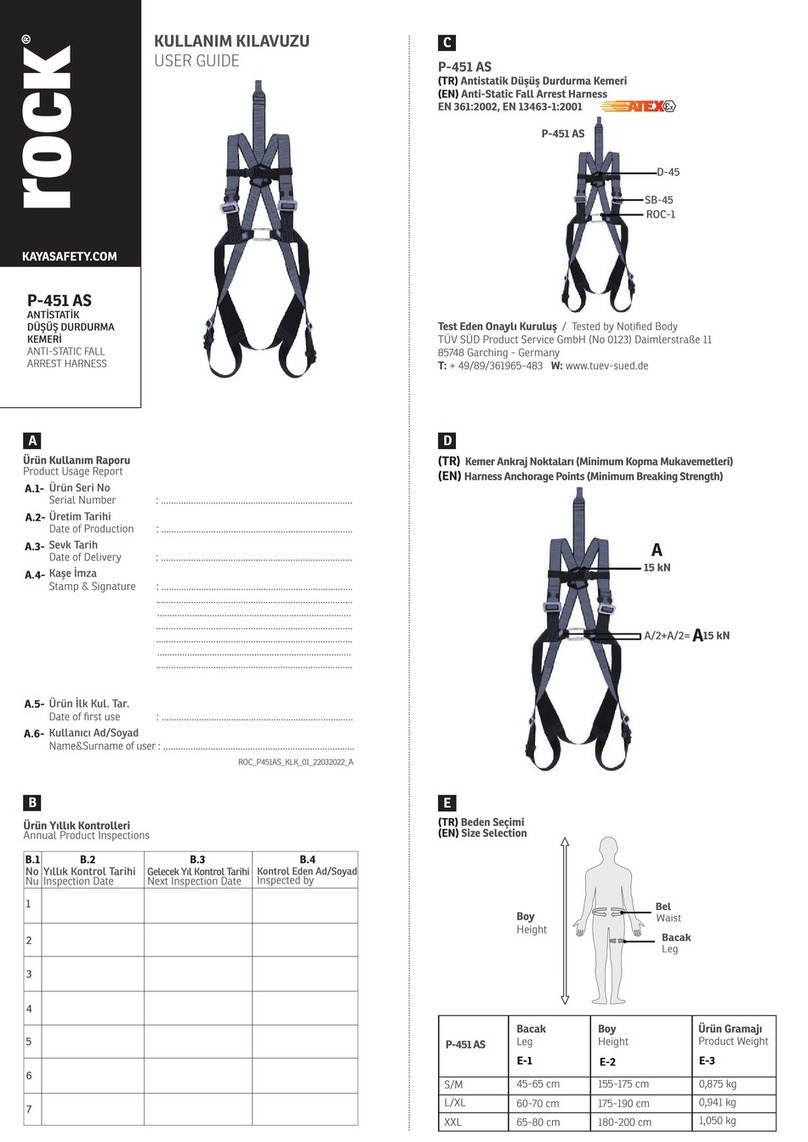
TRANSPORT, STORAGE & CLEANING /
REGULAR CHECKS / MAINTENANCE / SERVICE LIFE
Protected from light (UV radiation, welding
machines,…)
Not in the proximity of chemicals (acids, lyes,
liquids, vapours, gases,…) and other
aggressive environments
Protected against sharp-edged objects
Therefore, store the product dry and ventilated in a
moisture-repellent bag that is impervious to light.
For cleaning, use lukewarm water (<40°C) and
mild-action detergents. Then, rinse the equipment
with water of drinking quality, and dry it prior to put-
ting it into storage. Dry the product in a natural way,
not near fires or other heat sources.
For disinfection, use only substances that do not
have an impact on the synthetic material and metals
used.
If you fail to observe these provisions, you will be
putting yourself into danger!
Checking the equipment at regular intervals is abso-
lutely necessary: your safety depends on the effec-
tiveness and durability of the equipment!
Following each use, the rope and the eye terminati-
on [slaice]
®
in particular should be checked
for possible damage.
Check the eye termination for worn or broken sew-
ing yarns.
Check the eye of the eye termination [slaice]
®
with
special attention. In the eye the core of the rope is
removed and it is only the (visible) cover that bears
the load. In some versions of the slaice termination,
a bight of Dyneema
®
webbing is a redundant load-
bearing component.
If the cover is damaged, the product must be dis-
carded:
Protruding fibres / yarns are a sign of abrasion.
Cuts provide evidence of rope damage.
Deformation and squashing may point to local
overloading. Melted or hardened parts are signs of
thermal and / or chemical impact.
In any of these cases or if there is the slightest dou-
bt, the product must be withdrawn or
inspected by a competent person.
Systems that have been damaged or affected by a
fall must be withdrawn from use
immediately.
When using the equipment in occupational health
and safety to EN 365, it must be checked at least
every 12 months by a duly qualified person strictly
observing the instructions, or else by the manufac-
turer, and it must, whenever necessary, be replaced.
These inspections must be documented (documen-
tation of equipment; cf. attached Inspection Sheet).
Refer to national regulations for inspection intervals.
Such inspections must comprise:
Check of general state: age, completeness,
discolouration, correct assembly
Check of label: Does it exist? Is it legible? Is
there a CE marking? Does it specify the year
of manufacture?
Check of all individual parts for mechanical
damage such as: cuts, cracks, indentations,
abrasion, formation of ribs, kinks, crushing.
Check of all individual parts for thermal or
chemical damage such as: fusing, hardening.
Check of metal components for corrosion,
deformations.
Check of condition and completeness of termi-
nations, stitching (e.g. no abrasion of sewing
thread), splices (e.g. no slippage), knots.
Again, the following rule applies: If there is the
slightest doubt about the suitability of the product
to perform its required task, the product must to be
retired or quarantined and then subjected to testing
by a competent person.
Repairs may be carried out only by the manufac-
turer.
The service life of the [slaice]
®
may be up to 5 years
from the date of manufacture if used infrequently
and if stored correctly (see item Transport, storage
and cleaning).
The actual useful life depends solely on the condi-
tion of the product, which in turn is influenced by
various factors (see below). Extreme influences may
shorten service life to a single use only or to even
less if the equipment is damaged prior to its first
use (e.g. in transport).
Mechanical wear and other influences such as the
impact of sunlight will decrease the life span consi-
derably. Bleached or abraded fibres, discoloration,
and hardened spots are certain indicators that the
product needs to be retired.
It is clearly not possible to offer a general statement
about the product’s service life, as
lifespan depends on various factors, e.g. UV light,
type and frequency of use, handling, climatic
REGULAR CHECKS
MAINTENANCE
SERVICE LIFE
